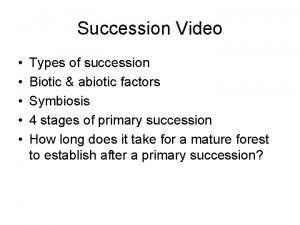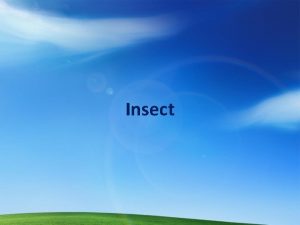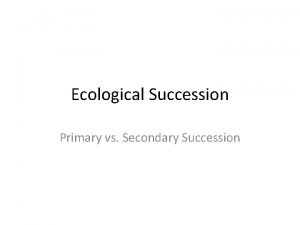Insect Succession What is insect succession Different groups













- Slides: 13

Insect Succession

What is insect succession? Different groups of organisms find the corpse attractive at different stages of decomposition and the resultant change in the community is called succession

What are the first colonizers? Bacteria Prefer the acidic conditions Already present in the body before death Continue to feed on body until it dries out

What are the second colonizers? Flies (blowflies specifically) 1 st instars can be found in orifices 2 nd instars can be found in a maggot mass making their way into the body 3 rd instars can be found deep in the body cavity Pupae can be found burrowed deep underground.

What are third colonizers? Rove beetles, carrion beetles, burrowing beetles Predators of fly larvae

What are the fourth colonizers? Parasitoid wasps Lay their eggs in fly larvae and pupae

What are the fifth colonizers? Cheese flies & Coffin flies Feast on body until it is too dry for the maggots to use their mouth hooks effectively.

What are the sixth colonizers? Hide beetles, Ham beetles, Carcass beetles Eat dry flesh, skin, and ligaments

What are the last colonizers? Moth larvae and mites Consume hair, leaving only bones

How are the insects collected? Trap and collect adult flies with nets 50 -60 larvae should be collected from the maggot mass Living larvae should be collected and shipped to the forensic entomologist for rearing purposes Need a food source: beef or chicken liver

What is the Killing Jar? (Insect preservation) Glass container with cotton balls or plaster soaked with ethyl acetate, ether, or chloroform Jar is capped and flies are immobilized within a few minutes Immobilized flies are then transferred to a jar of 70% ethyl alcohol for preservation

What information is included on the Forensic Entomology Data Form? General habitat and location of body in reference to vegetation, sun, shade, etc. Locations of insect infestations on the body Stages of insects observed Evidence of scavenging from animals and predation of eggs and larvae by other insects

Other special considerations All techniques should be thoroughly documented If the body has more than one site of colonization, each site should be treated separately Get a good representation of various sized larvae present Jar label should be in graphite/pencil, not ink
 Ecological succession succession of a pond
Ecological succession succession of a pond Ecological succession succession of a pond
Ecological succession succession of a pond How are ethnic groups and religious groups related
How are ethnic groups and religious groups related Different types of succession
Different types of succession Power sharing among different social groups in india
Power sharing among different social groups in india Different types of social groups
Different types of social groups It is the arrangement of something into different groups
It is the arrangement of something into different groups Types of social group
Types of social group Different groups in society
Different groups in society Different types of social groups
Different types of social groups Different materials have different
Different materials have different Library.thinkquest.org 19537
Library.thinkquest.org 19537 Different people different things
Different people different things Why do different polymers have different properties
Why do different polymers have different properties

























